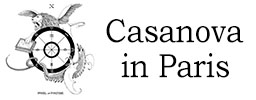A distinctive feature of ‘Casanova in Paris’ is the appearance of the characters. In Carl Doherty’s review for ‘Shelf Abuse’(here), he writes: ‘Butters’ characters are largely repulsive; crooked and bulbous noses looming over uneven teeth amidst misshapen faces. While Hollywood and BBC dramas may still seek to celebrate the fashions and décor enjoyed by the elite, his isn’t an era in which anyone would choose to exist.’
One of our aims in writing ‘Casanova in Paris’ and setting up our website was to go beyond the standard cinematic depictions of Casanova and his times. These depictions are great fun but rely heavily on superficial, idealised and stereotypical portrayals of people and the society in which they lived. However, even for the aristocracy it was a world where ill-health, poor diet, untreatable disease, economic instability, and religious and political oppression could quickly take its toll. For the vast majority, it was not a place of happy endings. The faces of our characters reflect that world. Even the beauty of a courtesan such as Madame de Boufflers is flawed while for the less privileged or older characters the impact of a much harsher life is even more evident. This realism helps to add a sense of depth and complexity to their personalities: they are people who have lived and experienced life, who have been shaped over time, not merely plucked out of the air, hollow denizens of no-where in particular.
‘Casanova in Paris: The Shadows of the King’ is freely available here.
27 long form articles on Casanova’s life and times are freely available here.
#characterisation #character #storytelling #casanova #d’Urfe

